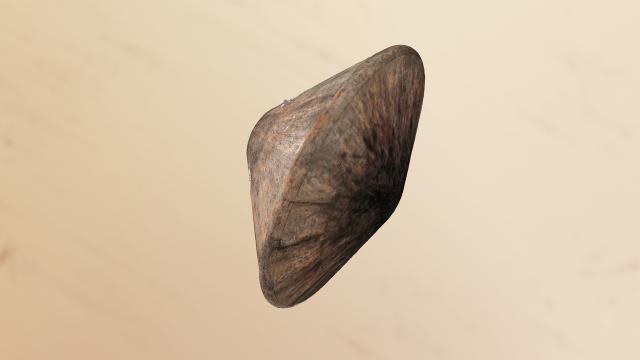The European Space Agency has released new information about the crash of the ExoMars Schiaparelli lander. Soon after the deployment of its parachute, the lander made a miscalculation so bad that it thought it was below the Martian surface, when in reality it was still 3.7km high.
Schiaparelli’s heat-scorched shield. (Credit: ESA/ATG Medialab)
The ESA’s investigation into the crash is far from over, but this latest revelation is painting a clearer picture of what happened during the failed landing on October 19.
Schiaparelli deployed its parachute normally at an altitude of 12km and at a speed of 1730km/h. As planned, the vehicle’s heat shield was ejected when it reached an altitude of 7.8km. But things went to complete crap from there.
As it was making its slow descent, Schiaparelli’s Inertial Measurement Unit (IMU) went about its business of calculating the lander’s rotation rate. For some reason, the IMU calculated a saturation-maximum period that persisted for one second longer than what would normally be expected at this stage. When the IMU sent this bogus information to the craft’s navigation system, it calculated a negative altitude. In other words, it thought the lander was below ground level. Ouch.

High-resolution images of the crash site. (Image: Copyright NASA/JPL-Caltech/University of Arizona)
That fateful miscalculation set off a cascade of despair, triggering the premature release of the parachute and the backshell, a brief firing of the braking thrusters and activation of the on-ground systems as if Schiaparelli had already reached the surface. This all happened while the vehicle was still 3.7km above ground, causing a catastrophic free fall that sent the lander plummeting downward at 300km/h.
Encouragingly, this behaviour was replicated in computer simulations, which means mission planners stand a good chance of correcting the anomaly. The exact cause of the IMU’s miscalculation was not disclosed, but if it was tripped by some kind of mechanical problem, that would be bad news. The ESA is planning a similar mission in 2020, which doesn’t leave much time for an engineering overhaul. A software glitch, on the other hand, would likely prove to be an easier fix. A full report of the investigation is expected in early 2017.
[ESA]
